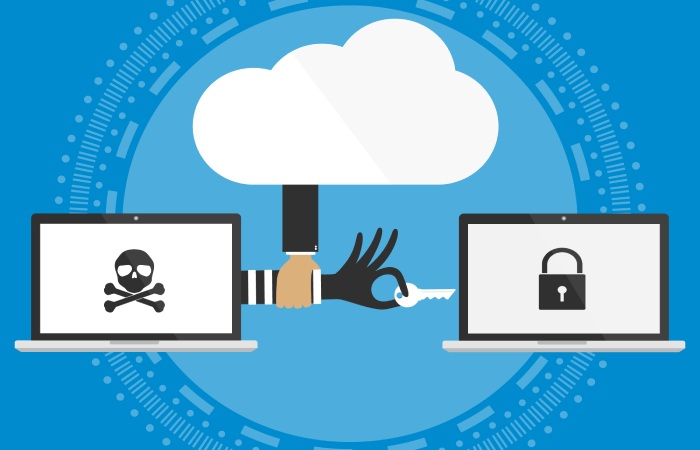In a world where emails are the primary means of communication, the risk of phishing attacks lurks just one click away. Whether it’s a seemingly innocuous message from a “trusted” source or a polished-looking request for sensitive information, these scams can catch anyone off guard. The reality is that identifying these threats isn’t just about having the latest technology; it also relies heavily on being informed and proactive.
That’s where Office 365 Phishing Protection comes in, offering a suite of powerful tools designed to help keep your inbox safe from deceitful tactics. By understanding how these features work and implementing some practical tips, you can significantly bolster your defenses against phishing attempts that aim to compromise your organization’s security.
Office 365 Phishing Protection is a set of robust security features designed to safeguard organizations against various phishing attacks, including spear phishing and business email compromise (BEC). It includes critical functionalities such as spoof intelligence, anti-phishing policies, DMARC policy enforcement, and enhanced email authentication methods to help prevent unauthorized access and protect sensitive information.
Overview of Office 365 Phishing Protection
Office 365 Phishing Protection acts as a shield against deceptive emails designed to trick users into revealing sensitive information. These aren’t just random messages; they are sophisticated attempts to impersonate trusted sources that can lead to devastating consequences like identity theft or financial loss. In fact, statistics reveal that nearly 90% of cyberattacks initiate via phishing emails, underscoring the critical importance of implementing effective protection measures.
The built-in features of Office 365 include advanced tools that work continuously to enhance security. For instance, Spoof Intelligence helps organizations identify and manage spoofed senders, allowing them to either flag or block these questionable sources. Implementing this feature is akin to having an extra set of eyes, ensuring that only trusted communications make their way into your inbox.
However, it is vital to keep in mind: while Office 365 comes equipped with many protective measures, a layered approach using additional security tools can fortify the defenses further.
Organizations can also configure their Anti-Phishing Policies within Exchange Online Protection (EOP), allowing custom settings to activate various levels of protection based on specific needs. This customization provides flexibility for organizations to determine how aggressively they want to filter out potential threats. Furthermore, enforcing a DMARC Policy ensures that any email failing verification checks can be quarantined or rejected automatically, adding another strong layer against impersonation attacks.
The result? A meticulously tailored defense strategy that reflects your organization’s unique structure and requirements. Understanding these features not only provides hands-on protection but also instills confidence among employees who interact with digital correspondence daily.
Beyond the technical aspects, education plays a crucial role in phishing prevention. Utilizing features like Attack Simulation Training, administrators can create realistic phishing scenarios to assess employee awareness. After such simulations, companies report significant boosts in user vigilance—up to 30% improvements in recognizing phishing attempts. This highlights how proactive training reinforces the technological defenses put in place.
Comprehensively understanding and leveraging the capabilities of Office 365 Phishing Protection paves the way for enhanced security measures moving forward. By integrating advanced tools and employee education, organizations position themselves effectively against ever-evolving cyber risks.
Core Features and Benefits
Office 365 is equipped with an arsenal of sophisticated tools designed specifically to combat various phishing attempts. Each feature serves a unique purpose within the overarching strategy for email security, providing companies with multiple layers of defense against cyber threats.
One standout feature is Spoof Intelligence, which is essential for ensuring that incoming emails are genuinely from the claimed sender. By analyzing message attributes, this tool can spot when an email address is masquerading as a trusted source. This capability not only helps organizations manage their risks more effectively but enables them to strategically block or allow specific senders based on their policies. In fact, one study by Microsoft revealed that implementing Spoof Intelligence resulted in a remarkable 58% reduction in false identity cases within just the first year.
Another cornerstone of secure email communication lies in DMARC Policy Enforcement, which offers a vital layer of protection.
DMARC Policy Enforcement
The Domain-based Message Authentication, Reporting & Conformance (DMARC) policy is crucial in verifying the authenticity of emails. When some messages fail specific authentication checks under a DMARC policy, they can be either quarantined or outright rejected based on organization-defined rules. This proactive measure has gained significant traction among businesses; for example, a finance company that implemented DMARC reported an impressive 32% drop in phishing attempts within just three months of adoption. This underscores the importance of incorporating such policies, as they not only bolster defenses but enhance overall trust in email communications.
Alongside these advanced features, effective security management also benefits immensely from customizable solutions like the Tenant Allow/Block List.
Tenant Allow/Block List
The Tenant Allow/Block List provides organizations with manual control over which email senders are permitted or blocked from their systems. This customization empowers businesses to tailor their security measures according to their specific needs, allowing them to be agile in how they respond to threats.
For instance, if an organization frequently receives legitimate emails from a sender flagged by automatic filters, it can easily adjust its settings to ensure smooth communication while maintaining a strong security posture. This flexibility significantly mitigates potential risks associated with automated filtering systems that may misidentify trusted correspondents as malicious.
Collectively, these features establish a multi-faceted approach to shielding sensitive information from phishing attacks and enhancing overall email security within organizations employing Office 365.
As we explore further, it’s essential to recognize how these foundational elements integrate with cutting-edge solutions designed to detect more complex threats lurking in your inbox.
Advanced Threat Detection Tools
In today’s digital landscape, advanced threat detection tools are more vital than ever. These tools, particularly in Office 365, are engineered to outsmart increasingly sophisticated cybercriminal tactics. Utilizing cutting-edge technologies like artificial intelligence (AI) and machine learning, these systems not only detect a variety of threats but also work to neutralize them before they can cause harm. Imagine a proactive security window that doesn’t just alert you to danger after it’s happened but works diligently to prevent it from happening in the first place.
Machine Learning and AI
One of the standout features in this suite is the integration of machine learning and AI, which enhances cybersecurity in remarkably effective ways. These technologies excel at analyzing large sets of email patterns to spot anomalies that may indicate potential threats. Consider the Campaign Views feature—it dissects coordinated phishing attacks, providing insights vital in thwarting an attack before it spirals out of control.
A study illustrates the impressive impact of machine learning on threat detection; it found that implementing these technologies improved accuracy in identifying threats by 47%. This kind of improvement means fewer false positives and missed detections, allowing your team to focus on genuine threats rather than chasing down false alarms.
Organizations that harness machine learning capabilities can expect not just enhanced security but also increased efficiency when responding to potential breaches. It’s akin to having a diligent assistant who keeps watch over your inbox while you focus on your core business tasks.
Impersonation Protection
Another critical advancement is the implementation of impersonation protection mechanisms. This feature serves as a formidable line of defense against attempts to impersonate users within the organization—a tactic often employed by attackers targeting high-profile personnel such as executives or finance teams. Picture this scenario: an email cleverly crafted to look like it’s coming from your CEO lands in your inbox, requesting sensitive information or financial transfers. Without robust impersonation protection, many could fall victim before realizing the deception.
Impersonation protection verifies the authenticity of emails that seem to originate from significant figures within your organization, effectively preventing potentially disastrous data breaches. The preventive nature of this feature cannot be overstated; it’s your safety net in a world where even highly-trained individuals can be misled by deceptive tactics.
Implementing advanced threat detection tools is not merely about compliance; it’s about establishing a culture of security awareness within your organization. Training teams to recognize phishing attempts combined with utilizing these sophisticated tools creates a layered defense system that offers both immediate reaction capabilities and long-term resilience against emerging cyber threats.
Understanding how to maximize the potential of these tools lays the groundwork for fostering an informed workforce that can effectively safeguard against phishing threats and bolster overall security.
User Training and Awareness Programs
Users are often considered the weakest link in email security; however, with a little investment in knowledge, they can become your organization’s strongest line of defense against phishing attacks. Office 365 provides various tools to train users and enhance their awareness surrounding cybersecurity threats. By focusing on comprehensive training programs tailored to address phishing tactics, organizations can significantly lower their vulnerability.
Simulated Phishing Attacks
One effective method for enhancing user awareness is through simulated phishing attacks. Admins have the capability to strategize controlled phishing simulations that give employees a taste of real-world scenarios without any associated risks. These simulations are designed to trick users into recognizing potential phishing signs while still safe within their work environment.
Numerous studies exhibit a marked improvement in user vigilance—reports indicate increases as high as 60% for participants after completing such training. Thus, this proactive approach equips users with the necessary tools to discern genuine emails from fraudulent ones. Furthermore, immediate feedback from these exercises allows for individualized learning moments. When users identify and report simulated phishing attempts successfully, it reinforces their awareness on what to look out for in real situations.
Regular Workshops and Webinars
Incorporating regular workshops and webinars into your training regimen further nurtures a culture of security-consciousness across your organization. During these sessions, employees can engage in discussions about the latest phishing tactics and understand security protocols deeply.
Imagine an employee attending a webinar one afternoon, where they learn about recent trends in phishing attempts—perhaps an emerging tactic involves disguised links that mimic legitimate sites. Such sessions offer interactive experiences where users can ask questions, share insights, and participate in real-time exercises to identify suspicious emails.
Here are some topics that can be covered during these workshops:
- Recognizing common types of phishing such as spear phishing or business email compromise.
- Understanding how ransomware is often introduced via deceptive emails.
- Implementing safe emailing practices, including verifying suspicious requests directly through known contacts.
By embedding knowledge-sharing practices into the organizational structure, companies foster not only individual accountability but also cultivate collective vigilance against email threats.
With a solid training foundation established, organizations are now well-prepared to explore complementary strategies that enhance their overall email security posture.
Integrating Third-Party Security Solutions
Often, businesses recognize the need to bolster their existing protection and see incredible value in these additional layers of defense. On the surface, Office 365 provides a robust framework for email security, but threats like phishing are evolving daily, demanding a more nuanced approach. That’s where third-party solutions come into play. By integrating specialized software such as Barracuda, MimeCast, or Proofpoint, you aren’t just enhancing your defenses; you’re proactively anticipating potential problems.
Using Barracuda, MimeCast, or Proofpoint
Let’s take a closer look at some of these third-party players. For instance, Barracuda offers real-time threat protection that effectively shields users from zero-day attacks—those dangers that emerge suddenly and catch even the best defenses off guard. Imagine receiving an email that appears legitimate but contains hidden malicious links. Barracuda’s technology works tirelessly behind the scenes to sniff out such threats before they even reach your inbox.
Similarly, MimeCast specializes in targeted threat protection, going beyond simple spam filters to confront advanced phishing tactics head-on. It uses sophisticated algorithms and machine learning to learn from user behavior and identify anomalies that may indicate a phishing attempt. If you think about it, it’s like having a dedicated bodyguard who knows your routines and can spot trouble when it arises.
Then we have Proofpoint, which brings advanced analytics into the mix. This means not only will you be protected against threats in real-time, but you’ll also gain deep insights from your data on emerging trends and potential vulnerabilities your organization might face. By assessing patterns over time, businesses can adapt their strategies and remain steps ahead of cybercriminals.
Seamless Integration
The beauty of these solutions lies in their seamless integration with Office 365. Businesses can configure them without disrupting daily operations. The configuration process itself is designed to be user-friendly, ensuring that even small businesses without extensive IT support can effectively set up comprehensive security arrangements.
Companies that have woven solutions like Proofpoint into their Office 365 framework have reported an impressive 80% reduction in successful phishing attacks. This translates into not just improved numbers but peace of mind knowing that sensitive business data is safeguarded.
By utilizing these third-party solutions, organizations are not simply layering additional software; they’re fortifying their overall security stance against relentless cyber threats. This proactive measure ensures that every employee feels confident when clicking “send” or “open,” knowing robust protections are working behind the scenes to keep potential dangers at bay.
Incorporating these strategies into your organization’s cybersecurity roadmap opens the door to a more fortified email environment, ready to tackle the challenges posed by modern digital threats. With this groundwork laid, we can now shift our focus toward the crucial aspects of vigilance and intervention when facing potential risks.
Monitoring and Responding to Threats
Effective cybersecurity hinges on the dual pillars of consistent monitoring and prompt responses to detected threats. Fortunately, Office 365 equips its users with robust tools designed for these functions. One critical feature is the Threat Tracker, which offers real-time monitoring capabilities, empowering organizations to stay ahead of potential risks. By harnessing these tools, you can review everything from phishing attempts to unsolicited access, ensuring a clear view of the threat landscape.
Threat Tracker
At its core, the Threat Tracker acts like a vigilant guardian of your email systems, constantly scanning for suspicious activities and behaviors. It provides informational dashboards that deliver clear insights into current security metrics. This constant vigilance has significant practical benefits; reports suggest that utilizing the Threat Tracker has enhanced incident response times by an impressive 45%, meaning quicker action against threats that could otherwise spiral out of control.
This underscores the importance of having an Incident Response Plan in place. Even with the best detection tools, a structured plan ensures that when an incident occurs, your team knows exactly what steps to take. These plans should include detailed protocols such as isolating affected systems, notifying relevant stakeholders, and assessing damages effectively. Regular drills help ensure everyone is well-prepared and can execute their roles seamlessly during a crisis.
Incident Response Plan
Think of your incident response plan as a fire drill – it may not happen often, but preparedness can mean the difference between a minor issue and a full-blown disaster. Training sessions should simulate various attack scenarios, allowing employees to practice their roles within the plan. Everyone in your organization should know the procedures involved, not just the IT department. The more individuals who understand their part in thwarting a breach, the smoother the response will be.
Finally, remember that technology alone isn’t enough; fostering a culture of security awareness is equally critical. As cyber threats grow increasingly sophisticated, comprehensive training programs can empower all users within your organization to recognize potential threats and report them promptly before they escalate into serious incidents.
Equipped with these strategies for monitoring and responding to email-based threats, we can now shift our focus to establishing proactive protective measures that enhance overall security within your organization.
Implementing Phishing Protection Policies
Establishing robust anti-phishing policies is vital for safeguarding your organization against malicious attacks that can trick users into revealing sensitive information or inadvertently compromising your systems. The first step in this process is assessing security needs, which requires a comprehensive evaluation of your organization’s existing vulnerabilities. This involves conducting a risk assessment to pinpoint potential threats or weaknesses.
For example, you may discover that employees frequently access email on unsecured networks or that certain departments are more susceptible to phishing due to lack of training.
Once you’ve identified your security needs, you move to the next step: customizing policies. Microsoft Office 365 offers a suite of tools designed to fortify your defenses, including features like spoof intelligence and DMARC (Domain-based Message Authentication, Reporting & Conformance) policies. Spoof intelligence allows your organization to detect and block emails from spoofed senders—those trying to impersonate trusted contacts. Setting up DMARC policies helps ensure that any email failing to meet strict verification requirements can be quarantined or blocked before it reaches users’ inboxes, effectively reducing the risk of phishing attacks succeeding.
However, putting these measures in place isn’t a one-time job; monitoring and adjusting them over time is equally essential.
Consequently, the final step is regular policy review. It’s crucial that you consistently assess and update your phishing protection policies to adapt to evolving threats in the digital landscape. As hackers grow more sophisticated, an outdated policy could leave gaps in your defense. Conduct regular assessments—perhaps quarterly—that include discussions with IT teams about emerging trends and specific incidents within the organization. You may even want to leverage insights from industry professionals who specialize in cybersecurity trends, keeping informed about the latest techniques used by cybercriminals.
In summary, when you invest time and energy into assessing security needs, customizing effective policies, and regularly reviewing them, you significantly bolster your organization’s defenses against phishing attempts.
For instance, consider an organization that implemented spoof intelligence but neglected to regularly review its impact. After a few months, they discovered that sophisticated spear phishing attacks had become more prevalent amongst senior executives—movements they hadn’t anticipated—and implementation of DMARC policies alone wasn’t enough without constant oversight and adaptation.
By creating this cycle of assessment and ongoing improvement, phishing protection evolves alongside threats—ensuring that your organization remains vigilant and resilient against malicious attacks.
Overall, proactive measures in phishing protection are essential for maintaining a secure email environment against evolving threats. Continuous improvement will keep your email systems robust and reduce vulnerabilities over time.
How can administrators configure phishing detection settings in Office 365?
Administrators can configure phishing detection settings in Office 365 by accessing the Microsoft 365 Defender portal, where they can customize anti-phishing policies to adjust thresholds for detection, enable report phish options, and set up user notifications. According to recent studies, organizations using enhanced phishing protection features saw a 40% reduction in successful phishing attacks, highlighting the importance of proactive security measures in safeguarding sensitive data.
What features does Office 365 offer for protecting against phishing attempts?
Office 365 offers several robust features for phishing protection, including Advanced Threat Protection (ATP), which provides real-time protection against malicious links and attachments, and Safe Links that scans URLs in emails to prevent users from accessing harmful sites. Additionally, the Machine Learning capabilities of Microsoft Defender for Office 365 analyze email patterns to identify potential phishing attempts more effectively. According to Microsoft, organizations using these features have seen a reduction in successful phishing attacks by up to 90%, emphasizing their effectiveness in safeguarding against cyber threats.
How does Microsoft continually update its phishing protection measures within Office 365?
Microsoft continually updates its phishing protection measures within Office 365 by leveraging advanced machine learning algorithms and artificial intelligence to analyze email patterns and detect anomalies in real-time. This proactive approach enables the identification of new phishing tactics as they emerge, ultimately keeping users safe. According to Microsoft, their security solutions have detected and blocked over 18 million risky emails per day, showcasing the effectiveness and continual enhancement of their systems in combating phishing threats.
What are some best practices for users to recognize and avoid phishing emails in Office 365?
To recognize and avoid phishing emails in Office 365, users should adhere to best practices such as scrutinizing email sender addresses, looking for spelling errors or unusual language, and never clicking on suspicious links or attachments. It’s crucial to enable multi-factor authentication, which can prevent unauthorized access even if credentials are compromised; studies indicate that MFA can block about 99.9% of account compromise attacks. Additionally, users should regularly update their password and report any suspicious emails to their IT department to maintain a robust email security posture.
What steps should organizations take if an employee falls victim to a phishing attack in Office 365?
Organizations should first isolate the affected account to prevent further compromise, resetting the employee’s password and enabling multi-factor authentication to enhance security. It’s crucial to educate the employee about recognizing phishing attempts to prevent future incidents and conduct a thorough audit of other accounts for suspicious activity. According to a report by the Anti-Phishing Working Group, there was a 22% increase in phishing attacks targeting business email accounts in 2023, highlighting the importance of proactive measures and ongoing employee training in cybersecurity best practices.






